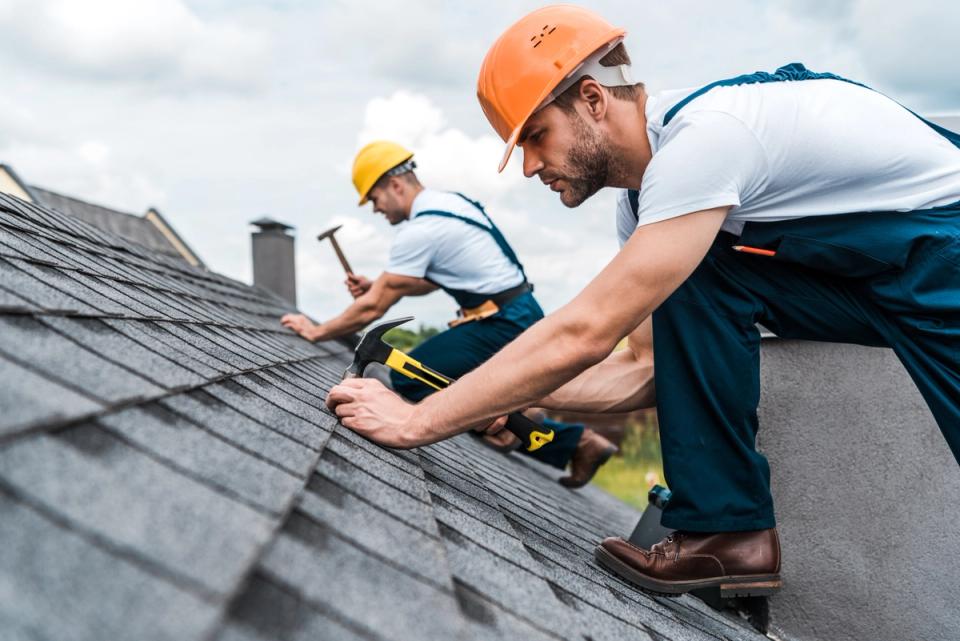
Selecting the right roofing material for a modern home often leads homeowners to consider flat, foam, and single-ply roofing. These roofing types are commonly used in contemporary architecture and commercial buildings, offering unique benefits and potential drawbacks. Understanding these options will help homeowners make an educated choice when planning their roofing projects.
Why Consider Flat, Foam, or Single-Ply Roofing?
Upgrading or replacing a roof is an essential investment that enhances a home’s durability, energy efficiency, and aesthetic appeal. Modern homes often feature flat or low-slope roofs, making traditional shingles less practical. Flat, foam, and single-ply roofing systems offer innovative solutions tailored for such designs.
These roofing types also contribute to improved energy efficiency and reduced maintenance costs, helping extend the lifespan of a home’s structure. Additionally, they provide homeowners with an opportunity to modernize their homes, increasing overall curb appeal and resale value. Whether you’re building a new house or replacing an aging roof, understanding these materials will help you choose the best option for your needs.
Flat Roofing: A Minimalist and Versatile Option
Flat roofs are popular in modern home designs due to their sleek, minimalist appearance and functional advantages.
Pros of Flat Roofing:
- Cost-Effective Installation: Requires fewer materials and labor than sloped roofing systems.
- Usable Space: Provides extra space for rooftop gardens, solar panels, or HVAC systems.
- Easier Access: Simplifies maintenance and repairs due to its walkable surface.
- Modern Aesthetic: Complements contemporary home designs with clean, simple lines.
Cons of Flat Roofing:
- Drainage Issues: Water pooling can lead to leaks if not properly designed and maintained.
- Shorter Lifespan: Typically lasts 10 to 25 years, depending on the materials used.
- Maintenance Needs: Requires regular inspections and sealing to prevent leaks.
Foam Roofing: An Energy-Efficient and Seamless Solution
Foam roofing, or spray polyurethane foam (SPF), is a seamless and energy-efficient roofing solution. It consists of a spray-applied foam layer that expands to create a durable and waterproof surface.
Pros of Foam Roofing:
- Superior Insulation: Reduces energy costs by improving thermal efficiency.
- Seamless Protection: Eliminates seams and joints, reducing the risk of leaks.
- Lightweight Material: Minimizes stress on the building’s structure.
- Durability: Can last over 30 years with proper maintenance and recoating.
Cons of Foam Roofing:
- Higher Initial Cost: More expensive upfront than some other roofing materials.
- Professional Installation Required: Must be installed by experienced contractors for optimal performance.
- Vulnerable to Damage: Susceptible to punctures from foot traffic or debris if not properly coated.
Single-Ply Roofing: A Durable and Flexible Choice
Single-ply roofing consists of flexible sheets of synthetic materials like TPO (thermoplastic polyolefin), PVC (polyvinyl chloride), or EPDM (ethylene propylene diene monomer). These materials are popular for commercial and residential flat roofs due to their strength and longevity.
Pros of Single-Ply Roofing:
- Longevity: Can last 20 to 40 years, depending on the material and maintenance.
- Energy Efficiency: Reflective coatings reduce heat absorption, lowering cooling costs.
- Lightweight Design: Minimizes structural stress compared to traditional roofing materials.
- Weather Resistance: Withstands UV rays, chemicals, and extreme temperatures.
Cons of Single-Ply Roofing:
- Seam Vulnerability: Seams may require sealing or welding to prevent leaks.
- Puncture Risk: Sharp objects or heavy foot traffic can cause damage.
- Installation Challenges: Requires specialized installation techniques for maximum durability.
Cost Comparison and Return on Investment
- Flat Roofing: $5 to $10 per square foot, depending on materials and installation complexity.
- Foam Roofing: $6 to $12 per square foot, offering long-term energy savings.
- Single-Ply Roofing: $4 to $9 per square foot, balancing affordability and durability.
Foam roofing, despite its higher initial cost, offers long-term savings through superior energy efficiency. Single-ply roofing offers a balance between cost and performance, while flat roofing is the most budget-friendly but may require more maintenance. Regardless of the choice, homeowners should factor in installation costs, upkeep, and energy savings to determine the best long-term investment.
Which Roofing Option Is Best for Your Home?
- Choose Flat Roofing If: You prioritize affordability, want extra usable space, and don’t mind regular maintenance.
- Choose Foam Roofing If: Energy efficiency, durability, and seamless waterproofing are your top priorities.
- Choose Single-Ply Roofing If: You want a long-lasting, flexible, and weather-resistant roofing solution.
Getting Professional Estimates
Consulting professional roofing contractors can help determine the best choice based on your home’s structure, climate, and budget. Many offer free inspections and can provide personalized recommendations. Ask about warranties, maintenance requirements, and estimated lifespans to ensure you’re making a wise investment. It’s also beneficial to obtain multiple quotes to compare pricing and service quality before making a decision.
Final Considerations
Choosing the right roofing material for your modern home depends on your budget, climate, and long-term goals. Flat, foam, and single-ply roofing each offer unique benefits, and understanding their pros and cons will help you make an informed decision. Additionally, investing in the right roofing material can increase property value and improve energy efficiency, leading to cost savings over time. By working with experienced professionals and selecting the best material for your needs, you can enhance your home’s durability, energy efficiency, and overall value.